
Royal Palm Bugs
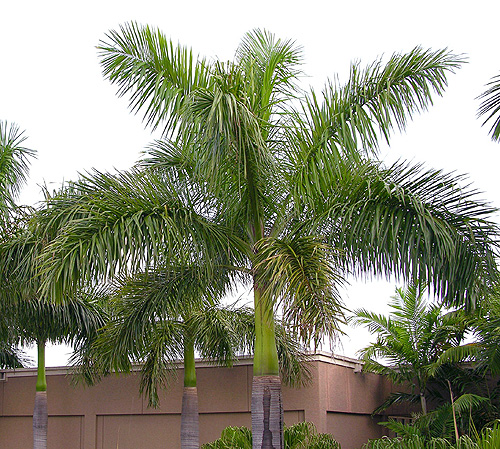
A Bug in a Tree
Miami’s grand Royal Palms attract more than just human admirers
There is no one tree that sets Miami apart from any other North American city like Roystonea regia, the Royal Palm. Utilized in Miami as an ornamental tree since the beginning of the 20th centaury, boulevards that are lined with this stately palm tree become immediately, distinctive tropical vistas. No single tree can accentuate the architecture of a building better than this Caribbean palm. I have seen the Royal Poinciana in the Plaza in Port of Spain, Trinidad; or the avenue of Cannonball trees in Caracas, Venezuela; or even the avenue of Samanea saman in Singapore, none compare to the tropical grandeur of the Royal Palms lining Biscayne Boulevard in Miami.
During the past several months though, I have gotten quite a few calls and emails on Royal Palms that were not doing well. Indeed, perhaps the popularity of this palm is part of the problem. Like with many popular and easy to grow plants, we end up creating a monoculture which certainly offers an almost unlimited food supply and habitat to plant pathogens.
There are numerous insects, fungi, and other assorted afflictions that can damage Royal Palms but one of the most prevalent and distinct problems here in Miami (and Cuba) is an insect called the Royal Palm bug. This diminutive insect, only about one tenth of an inch (2.5 mm) long, Xylastodoris luteolus attacks the new foliage of this palm from mid-March to early July, and by August up to five or six fronds may be necrotic (very yellow). About August the populations of this bug diminish and the succeeding palm fronds remain green so that by autumn the fronds that were damaged previously are midway between green fronds produced before and after the infestation.
The Royal Palm bug completely relies on the Royal Palm for food and shelter. Eggs are laid in spring inside the folds of the new palm leaflets. After eight or nine days the eggs hatch and the bugs begin to feed on the new leaf producing yellow spots on the lower leaf surface. Too many bugs feeding on one leaf can cause it to become brown and finally wilt and become shredded in the wind. Royal Palms produce about one leaf a month, and the life cycle of this insect is also one month, so it is usual to see four damaged leaves on a palm that has been attacked.
This damage will not kill the palm but will certainly reduce the photosynthetic surface (the food making part of the palm) of the leaves thereby preventing optimum growth. If this happens two or three years in a row you will likely see a narrowing of the trunk of the palm in this area. An interesting fact is that palms less than 12 feet in height are rarely attached by the bug. We normally see very tall palms damaged. No one knows the reason for this peculiar habit.
The sheer height of Royal Palms makes their afflictions difficult to diagnose and treat. A bucket truck or aerial lift is necessary to reach the leaves but even when a treatment is available it is very impractical to spray the leaves. I know of several spray drift issues that have occurred when the leaves of tall Royal Palms were sprayed. They were very costly to the property owner.
Insecticides are effective against Royal Palm bugs. Although direct spraying of the leaves is impractical, there are chemicals that can be drenched onto the root system of the palm. There are also injections that can be done into the trunk with these same chemicals. Just remember a few things before you call in the pesticides; injection makes a hole in the trunk that will never heal. Palms have no cambium layer which will seal over punctures or holes thereby leaving a point of entry for plant pathogens into the trunk of the palm, forever. If you do go with the injection method or a root drench on a tall palm tree; it may take weeks for enough of the chemical to travel up the palm’s vascular system and perhaps even longer to kill the offending insects. These chemicals need to be used as a preventive measure but it is difficult to predict from year to year when an infestation of Royal Palm bugs will appear on any given Royal Palm.
My recommendations on this issue are; Royal Palms like lots of water, don’t let them dry out, and if possible plant them in locations were they can eventually reach the water table. Don’t fertilize or fertilize minimally, all that extra nitrogen and new soft growth is very nutritious to insects. Keep a thin layer of mulch on top of the root system that continuously adds decomposing matter to all of the soil organisms that are beneficial to plants and helps keep them healthy. Finally let’s try to stay away from monocultures.
Jeff Shimonski
August 2007




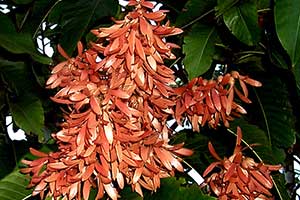 About Tropical Trees & Arboriculture
About Tropical Trees & Arboriculture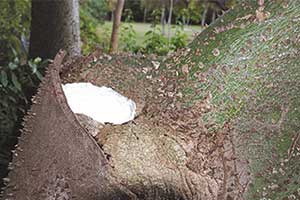 An Experiment in Arboriculture and Mosquito Control
An Experiment in Arboriculture and Mosquito Control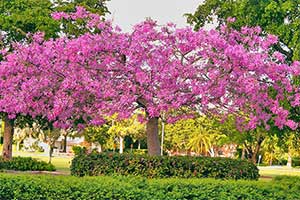 Ceiba Speciosa
Ceiba Speciosa Why Trees Blow Over
Why Trees Blow Over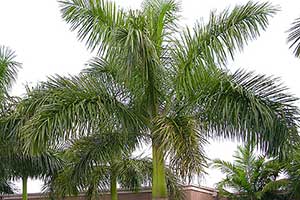 Royal Palm Bugs
Royal Palm Bugs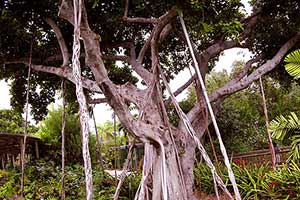 Ficus Species & Hurricane Horticulture
Ficus Species & Hurricane Horticulture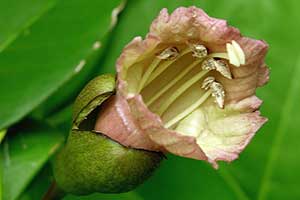 Pollination and the Natural History of the Calabash Tree
Pollination and the Natural History of the Calabash Tree Pollinating Sausage Trees
Pollinating Sausage Trees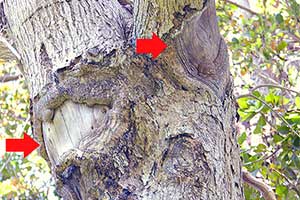 Some Observations on Relocating Tropical Trees
Some Observations on Relocating Tropical Trees